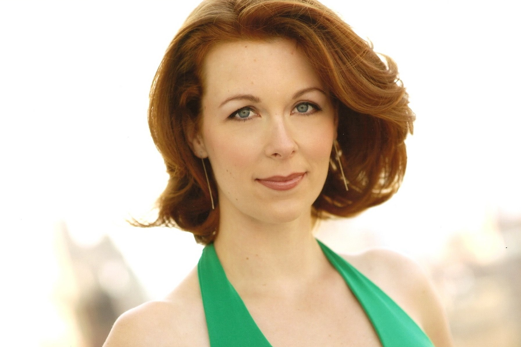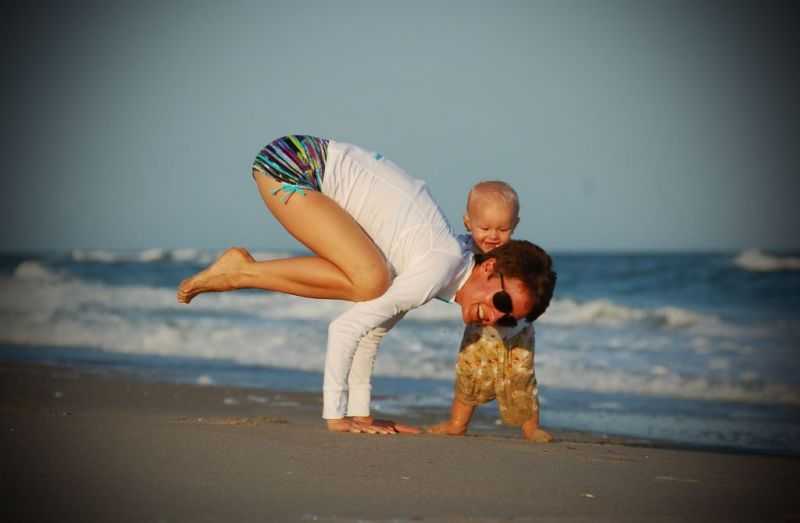 Dr. Peter Philip, a faculty member with the Herman & Wallace Institute, has published a new book! "Pelvic Pain and Dysfunction: A Differential Diagnosis Manual" is available now through Thieme Medical Publishers. We caught up with Dr. Philip to learn a bit more about his project.
Dr. Peter Philip, a faculty member with the Herman & Wallace Institute, has published a new book! "Pelvic Pain and Dysfunction: A Differential Diagnosis Manual" is available now through Thieme Medical Publishers. We caught up with Dr. Philip to learn a bit more about his project.
Peter is also the author and instructor of two courses offered through Herman & Wallace. Sacroiliac Joint Evaluation and Treatment is an opportunity to learn an exercise and stabilization approach to pelvic girdle, sacroiliac joint, and pelvic ring dysfunction. This course is available twice in 2016; May 21-22 in Austin, TX and later on November 6-7 in Bayshore, NY. Peter's other course, Differential Diagnostics of Chronic Pelvic Pain: Interconnections of the Spine, Neurology and the Hips, expands the practitioner's diagnostic toolkit for complicated chronic pelvic pain patients. This course is available on August 19-21 in Nashville, TN. Don't miss out!
H&W: Thanks for doing this interview, Peter! What's new?
Dr. Philip: After years of research, and writing, my textbook has been published and is ready for the public.
H&W: That's great! What can you tell us about the book?
Dr. Philip: It's called Pelvic Pain and Dysfunction; a Differential Diagnosis Manual, and it has been published by Thieme. Thieme is based out of Stuttgart Germany and is the world’s largest distributor of medical textbooks and journals! The purpose of the book is to answer the questions that so many clinicians have as it relates to their patient’s pain, such as:
- Why are there muscle spasms?
- How can the pain seemingly spread from one organ to the next? Or even from one system to another?
- How can I effectively and efficiently evaluate my patients who suffer with pelvic, bladder, bowel, or visceral pain and dysfunction?
- And so much more
The textbook also outlines a revolutionary strategy that immediately provides the patient with a reduction in their pain, and often immediate resolution of tight “spasms” or “trigger points”. The mysteries of how and why our patients' pain changes and progresses are outlined in a clear, linear fashion that integrates into a practitioner's current practice. The purpose of the textbook is to provide a means of understanding where pain originates and how to isolate it to a specific region. Once isolated, the book instructs how to treat that region effectively.
H&W: you mean to tell me that you’ve created a method which allows a suffering patient to experience “immediate relief”?
Dr. Philip: Yes! And it's actually quite simple once you understand the anatomy, and the integration of the central nervous system, the peripheral nervous system, psychology, viscera, muscles, tendons, ligaments, and nerves.
H&W: Who is this textbook written for?
Dr. Philip: the textbook is written for all my colleagues who treat patients with pelvic pain. Medical Doctors and Doctors of Science in both the United States and Germany have reviewed the material and found the information, concepts and strategies to be useful.
H&W: how did you put this all together?
Dr. Philip: I realized years ago that the field of pelvic health did not take into consideration the multiple facets that may be involved in a patient’s pain. Many strategies employed simply address restrictions in tissue mobility by “stretching” or “massaging” without taking into consideration the reason these structures are limited in mobility, or have spasms. Knowing why a structure is limited in its mobility or is spastic will allow the clinician to immediately address the suffering patient's needs and promote healing, even if the patient has been suffering for decades.
H&W: but how did you come up with this process?
Dr. Philip: my background is in non-surgical orthopedic medicine. Having three degrees in orthopedic physical therapy, and a certification by the International Academy of Orthopedic Medicine, I applied the differential diagnostic concepts of orthopedic medicine to the pelvic pain population with great success! Using the principles found within this textbook the clinician will have the opportunity to address the exact tissue at fault, provide a near immediate resolution of their pain, and provide a means for the patient to completely regain their wellness and move forward in their life.
H&W: I can see why you are so excited. Is this textbook available yet?
Dr. Philip: yes it is. It can be found at http://www.thieme.com/books-main/obstetrics-and-gynecology/product/3517-pelvic-pain-and-dysfunction. I put in a lot of effort to keep the book comfortably priced at $99.00! I know how tight cash can be for students and the working professional, so keeping it affordable was paramount to me.
H&W: What a fantastic project. Thank you so very much for taking the time to share it with us!
Dr. Philip: It's been a pleasure. Thank you to the Herman and Wallace Institute for allowing me to introduce my textbook and to teach these concepts and strategies.
H&W instructor Dustienne Miller, CYT, PT, MS, WCS wrote this post.

As specialists in pelvic health, we have the honor of being trusted with very private information. Our patients trust us with their secrets, their emotions, and their bodies. Sometimes patients reveal traumatic personal stories, both past and present. Even if our patients have not suffered emotional, physical, or sexual abuse, we can assume that the diagnosis of pelvic floor dysfunction is traumatic itself. Bouncing from clinician to clinician and inability to share their pain and experience with coworkers and friends is enough to increase baseline anxiety and depression levels. Yoga has proven to be an effective method in helping to heal Post Traumatic Stress Disorder and other mental comorbidities associated with pelvic floor dysfunction. But where do you start? How do you make your patient feel safe?
In David Emerson and Elizabeth Hopper?s book Overcoming Trauma through Yoga, there is guidance on how to appropriately guide your patient or yourself through a yoga program that feels safe and appropriate. As clinicians, we are very aware of monitoring patient response in the treatment room. If we notice guarding or dissociation we do not continue the session according to the goals we have set for the patient, rather we meet the patient where they are at that time on that day and work accordingly. I recommend we utilize the same sensitivity with our patients when creating a home program and working with our patients in open gym areas. What might feel great for us (ie: downward facing dog) may trigger trauma for another. Be mindful of the transition from the emotionally charged manual treatment to a less contained room like an open gym. Instructing a patient in pelvic tilts and bridging with other people around could trigger an emotional response, especially if their emotions were primed after myofascial release in the pelvis and abdomen. Bottom line: take the sensitivity you have at the plinth and carry it over into the exercise component of your treatments. Your patient will lead the way.
Dustienne Miller is a board certified women?s health clinical specialist and Kripalu Yoga teacher. She is the creator of the DVD Your Pace Yoga: Relieving Pelvic Pain, a musical theatre performer, and a terrible cook. Her two day class offered through Herman and Wallace, Yoga for Pelvic Pain, is being offered in San Diego next March.

This post was written by H&W faculty instructor Peter Philip, PT, ScD, COMT. Peter instructs the Differential Diagnostics of Chronic Pelvic Pain and the Sacroilliac Joint Evaluation and Treatment courses.
Have you ever palpated “marbles” - rolling masses along the SIJ that just don’t seem to go-away? Let’s take into consideration that you are a competent clinician, and that your patient is compliant with all of your requests. Clinical testing is negative for lumbar involvement, and both provocation and movement tests alike indicate involvement of the SIJ. Despite countless treatments directed at core training, and pelvic stabilization, the “marbles” persist.
Clinically speaking, often what is seen is that the innominate structures attain a more neutral alignment, where the sacrum maintains its hyper-nutated position. As a synovial joint, the SIJ is prone to swelling and subsequent scarring when placed under mechanical stress - hence the “marbles”. With great sincerity, the patient and clinicians alike focus on core strengthening, which often produces the correction of the innominate, but for reasons “unknown” to many clinicians and patients alike, the relative angle of the sacrum remains unchanged. Why would this be, how could this occur?
As a clinician, have you ever considered evaluating, and subsequently treating the anterior SIJ ligament? Running obliquely across from the sacrum to the innominate, the anterior SIJ ligaments have been found to be an underlying cause of chronic lower back pain, and sacroiliitis. As ligaments will do under mechanical stress, the anterior SIJ ligaments will stretch and scar, forming fibrous unions that limit their flexibility and hinder your manual techniques to improve SIJ osteokinematic motion. Akin to other ligaments of the body, once the origin of the mechanical insult has been addressed, the ligament can be directly treated via cross fiber massage, and to the surprise of many clinicians and patients alike heal in an expedient fashion; regardless of symptom duration. To best serve their patients, it would behoove the clinicians to take into consideration the concepts of central sensitization and knowledge that the anterior portion of the SIJ is innervated by segments L4 to S3! These and other strategies are discussed and implemented in both the Differential Diagnostics of Pelvic Pain, and The Evaluation and Treatment of the Sacroiliac Joint & Pelvic Ring courses.
Want more from Peter? You can catch him teaching his course on the SI Joint in Baltimore in July and the Differential Diagnostics course in New Canaan, CT in October.

This post was written by H&W instructor Dee Hartmann PT, DPT. This year, H&W is thrilled to be offering a brand new coure instructed by Dee, Assessing and Treating Women with Vulvodynia.This course will be offered in September in Waterford, CT.
What's love (and sex) got to do, got to do with it?
Tina Turner said it well. (Obviously I’m taking a little liberty here.) Some think that love and sex go together, you know, like bread and butter. Others? Not so much. Many think that love thrives even though the sex may slow down because of things like babies, work, stress, dinner with friends, and cleaning the bathroom…you name it. A lot can come between you and a good bedroom romp. But what if those bedroom romps had NEVER been good? What if the only fireworks you remember when earning your womanhood badge were akin to hot, searing sparklers—held way too close for comfort above your knees and between your legs. What’s with that, right?
Tina goes on “…that the touch of your hand/makes my pulse react…”. We all remember that feeling, that first titillation. It was there “…It’s physical/Only logical/You must try to ignore/That it means more than that”.
Boy meets girl. Hugging. Touching. Kissing. All that normal stuff that’s so good. Further progression might be awkward and clumsy but ‘it’ usually works nonetheless. But not always. Sometimes, the sex afterglow is more like, “Wow. That was way overrated…and who lit the fire in my vagina?” That burning pain lingers for days and celibacy, though considered, doesn’t really seem like a good alternative. You try again and again and along with more failed attempts, the pain gets worse. Your brain begins to think that any time anything comes too close to your vagina – like a tampon, fingers, a vibrator, the doctor, or a bicycle seat – it needs to shut the doors for business. As we say in the business, the pelvic floor muscles go into overdrive. Everything can get a bit goofy. You become all too familiar with your work bathroom as your bladder doesn’t seem to want to hold as much as it used to. Emptying your bowels becomes an effort. And those tampons that wouldn’t go in? Now you know why. There’s no room for anything down there! Armed with the sparkler analogy, the only help you get from most medical providers is “just relax, honey” or “have a glass of wine first” or “maybe your boyfriend/husband is just too big for you.” That stinks. And it’s not normal. Sex and reproduction (remember we’re the only mammals—besides dolphins—who do it for fun) are built in to our primitive brain, just like breathing and eating. “It may seem to you/That I'm acting confused/When you're close to me/If I tend to look dazed.” After the whole relaxing and drinking things fail and you kind of like your partner’s parts, what’s a girl to do?
“I've been taking on a new direction/But I have to say/I've been thinking about my own protection/It scares me to feel this way.” Once pain and fear have taken the place of excitement and arousal, your sexual future may appear less and less clear. As you and your partner begin experiencing nothing but frustration, there are my tips for making it through this tough stage.
1) Your best tool is always communication, communication, communication. First and foremost, sex should never hurt. Never. Ever. Discuss it with your partner long before you’re in bed, the lights are out, and you’re pretending to be asleep to dodge foreplay. Desire and arousal go together to create increased blood flow and lubrication, but no one can deny that it’s pretty hard to get excited about a hot stick in the eye (my analogy). Fear of impending pain can throw a wet blanket on the whole idea of sex unless you’ve agreed first to work together.
2) You may have learned to fear touching because of where it might lead, but avoiding hugging, touching, cuddling, and kissing is the first step in the wrong direction. Enjoying your partner’s touch—sexual or not—is a prerequisite for good love-making and will make you both happier in the long run.
3) Make a deal that there will be no sexual contact until you’re ready and will help you to begin dealing with the pain. Keeping your love alive matters for your relationship. Holding back in resentment and fear of the next sexual move chips away at the trust you’ve built.
4) As you begin to regain control, try to be the intimacy initiator at least once a week (or some predetermined time frame). Getting yourself mentally prepared goes a long way to gently urge arousal. Often it takes putting a sticky note on the fridge or work computer screen to remind you to think about it during the day (we women have so many other more important things to think about; sex, even in the best of times, usually doesn’t make the top five). Partners love it as they’ve usually shut down their advances to avoid yet more frustration, rejection, and heartache.
5) Once you’re ready to go for it, remember that your body that might not be too excited about entertaining an extended stay visitor. By agreeing to short visits in the beginning, the brain catches on and doesn’t shut down into protection mode. Go for more foreplay rather than less. Then, once his climax is close at hand, actual penetration time is kept at a minimum. You’ll be happier. He’ll be happier. And your vulva will appreciate the plan.
And here’s where Tina and I part ways. She may have gotten to go on singing (and making millions), but I get to gently guide women to their desired sexuality. Incredible women fill my office every day and continue to amaze me with what they’re able to do with and for their bodies. I don’t fix anyone. Instead, I help them find the power they need to fix themselves. “What's love got to do, got to do with it/What's love but a sweet old fashioned notion.” Call me old fashioned but I can’t think of a greater gift as women’s health PTs than to be able to help women feel more comfortable as women. And to think they call this work!
Want more from Dee? Consider joining us for the Septmber course!
This post was written by H&W instructor Dawn Sandalcidi, PT, RCMT, BCB-PMD. Dawn's course that she wrote on "Pediatric Incontinence" will be presented in in South Caroline this August.

I will never forget the morning I was called by one of my referring pediatricians to tell me an 11-year-old boy with fecal incontinence hung himself because his siblings ridiculed him. If you ever ask me why I do what I do, I will tell you so that nothing like that would ever happen again.
When we think of pediatric bowel and bladder issues we primarily focus on the physiologic issue itself and treating the underlying pathology. I think it is imperative to teach a child that she/he did not have a leak but their bladder or bowel had a leak. It makes the incident a physiological problem and not a problem of the child.
It is not always apparent how much the child is suffering from issues with self-esteem, embarrassment, internalizing behaviors, externalizing behaviors or oppositional defiant disorders. Dr. Hinman recognized theses issues years ago (1986) and commented that voiding dysfunctions might cause psychological disturbances rather than the reverse being true. Dr. Rushton in 1995 wrote that although a high number of children with enuresis are maladjusted and exhibit measurable behavioral symptoms, only a small percentage have significant underlying psychopathology. In more recent studies by Sureshkumar, 2009; Joinson 2007 it was noted that elevated psychological test scores returned to normal after the urologic problem was cured. Lettgen et al. 2002, Kuhn et al, 2008, van Gontard, 2012 all reported that children with urge incontinence are distressed by their symptoms but the family functioning is intact.
I frequently get testimonials from my patients. I would say the common denominator is the child and/or parental report that the child is “much better adjusted,” “happier”, “come out of his shell”, “more outgoing”, “making friends.” As a side note -- they’re happy they don’t leak anymore.
The International Children’s Continence Society (i-c-c-s.org) is filled with standardization documents that support the work we do to take care of kids with elimination issues. The work we do to take care of these kiddos in not only necessary but also mandatory to avoid these psychological disorders.
To learn more about Dawn's course visit Pediatric Incontinence
Read more about what Dawn does in PT in Motion
This post was written by H&W instructor Dawn Sandalcidi, PT, RCMT, BCB-PMD. Dawn's course that she wrote on "Pediatric Incontinence" will be presented in in South Caroline this August.

Years ago when my oldest daughter was 4 years old and in Pre-school I received an urgent call at the office that she had an accident. Immediately my head began to race, “What hospital is she in?” “What did she break?” Then the director informed me she wet her pants. I collapsed in my chair with a huge sense of relief and I began to ponder “Did she have an ‘accident’ or did her bladder leak?
Merriam-Webster defines an accident as:
- 1. An unforeseen and unplanned event or circumstance
- 2.An unexpected and medically important bodily event especially when injurious
- 3.Used euphemistically to refer to an involuntary act or instance of urination or defecation
Now lets think about that. How would you feel if someone approached you after noticing a smell or a wet spot and asked you “Did you have an accident?” My first thoughts are maybe shame, embarrassment, guilt or failure. “I” had an accident. Children feel without easily being able to express these emotions thus internalizing their feelings. This then can be expressed with inappropriate behaviors.
When I work with children, and adults for that matter, I frame the conversion with the physiology of the anatomical structure that is unable to do the job it is designed to do. I teach the children about their anatomy and bladder/bowel function and I am clear to let them know that their bladder and/or bowel had a leak, they did not. It takes ownership away from the person and places it on the body part that is currently dysfunctional. At that point we discuss we can re-train the body part to do the job they were designed to do. The kids become empowered that they will be able to become “The Bladder/Bowel Boss”.
To learn more about Dawn's course visit Pediatric Incontinence
In our weekly feature section, Pelvic Rehab Report is proud to present this interview with Herman & Wallace instructor Tina Allen, PT, BCB-PMD, PRPC

How did you get started in pelvic rehab?
I was about 5 years into my career as a PT when for some reason I had patients who where comfortable with me enough to ask questions like, "I'm leaking. Is that normal after giving birth?", "Since my total hip replacement I've been leaking urine" and "I have pain sometimes when I'm have sex...is that normal?". I was working in Outpatient Orthopaedics and I had no idea if it was normal. I searched and found out that it wasn't. After whispering to my patients that it wasn't normal, that I read that there where things they could do about it and then slipping them pieces of paper with instructions on how to maybe make it better; I decided I should learn if there was something a PT could do to help. I spent time with Ob/Gyn's and Urologists learning from them and applying my musculoskelatal knowledge to what they taught me. I was still in denial that I could help folks but then I started getting patients specifically referred to me for these conditions. I finally found that there where classes I could take! Imagine! That was 20 years ago now!
Who or what inspired you?
My patients have always been who inspires me! The questions they ask and how they face what they are going through has always pushed me to figure out ways to help them along their paths to healing and improved function!
I must also include all the PT's whom take our courses. Watching everyone lean into the uncomfortableness of what we teach and the questions everyone asks all in the hopes of helping that client whom walks into the clinic on Monday is inspiring.
What have you found most rewarding in treating this patient population?
It has to be that first session with a patient whom when you educate them on anatomy and function of the urogynecolgical system including fascia and what is needed for function (intimacy, continence etc) and I can see the light bulb go off for them on how everything is connected and everything has to be treated as a whole.
What do you find more rewarding about teaching?
This has to be the inspiration I get a thrill from being with a room of Pelvic Rehab therapists. We all work behind closed doors all day and getting to be in a room with such amazing like-minded therapists gives me a shot in the arm. To watch us all click in and problem solve how to serve our population of clients is inspiring for me.
How did you get started teaching pelvic rehab?
I was lab assisting courses for Kathe and Holly for years. Then one year Holly Herman just kept saying to me, "Why aren't you teaching?" "You could teach this?" "Tina, why don't you take this lecture?" "Tina, how many patients do you see like this in a day? What would you do?" I almost starting avoiding her Then I talked to Kathe about teaching and she said she was just waiting for me to say I was ready to start. That's our founders; always encouraging us to do more and contribute more!
What was it like the first time you taught a course to a group of therapists?
The first time I taught was terrifying! I'm a bonafide introvert (have multiple personalty tests to prove it) and standing in front of 40+ folks talking was not my idea of a fun way to spend a weekend. After the first lecture or two I found a rhythm and relaxed into it. By the afternoon or maybe the next day I was very excited to be around so many clinicians interested in learning and treating Pelvic Rehab.
What have you learned over the years that has been most valuable to you?
That my clients journey is their journey and I get to be a part of it. It's a privilege but it is still their journey. My hope is that where ever they meet me along their path I can assist them to their next step. As long as I get out the way that can happen.
What is your favorite topic about which you teach?
My favorite part of every course are the lab sessions. Getting to teach at each table in small groups and helping clinicians refine their observation and palpation skills is what makes me happy!

This March, H&W is launching a brand new course on Oncology and the Male Pelvic Floor. This course was developed by H&W faculty member Michelle Lyons, PT, MISCP.
Pelvic Rehab Report sat down with Michelle to learn more about her course.
PRR: What inspired you to create this course?
ML: I am very passionate about oncology rehab and pelvic physical therapy. While it has been great to see the huge advancements being made in the provision and recognition of pelvic physical therapy, I often feel that cancer survivors don’t always get the treatment they deserve – they don’t fall exclusively into the domain of the pelvic therapist or the oncology therapist. Add to this the lack of awareness in the medical community about the benefits of physical therapy generally (and pelvic physical therapy especially) and it becomes obvious that a lot of pelvic oncology patients, both men and women, have many issues that we can help address. The first step is creating awareness, both with our medical colleagues and with cancer survivors, about the benefits of physical therapy
What resources and research were used when writing this course?
I like to use a wide range of resources when creating a course. My main priority was to determine if there was a need for this service – I visited cancer survivorship websites and forums and asked on various social media sites, as well as talking to medical and therapy colleagues, about their opinions on the topic. The answer was a resounding ‘We need this!’
I read hundreds of journal articles, interviewed healthcare professionals and patients as well as drawing on my own professional experience. I want this course to be based on the best evidence based medical practice out there, but more importantly, I want to make the information immediately clinically applicable, so there will be a generous allotment of time to discussing and practising manual therapy techniques and exploring different ideas for exercise prescription. I believe we are all students and we are all teachers; I know I learn something new every time I teach, so I am really hoping these classes will be a forum to get therapists brainstorming and planning how best to serve this community
Can you describe the clinical/treatment approach/techniques covered in this continuing education course?
We will be looking at how to apply the skills we have to help problem solve pelvic issues such as bladder, bowel and sexual dysfunction, but also thinking about the sequelae and complications of cancer treatments such as osteoporosis, fatigue and cognitive changes. I want to discuss the necessary precautions and contraindications we need to be aware of but also to look at how to develop the skillset we already have to really enhance cancer survivors’ quality of life
Why should a therapist take this course? How can these skill sets benefit his/ her practice?
Fortunately, we are seeing more people living longer lives as cancer survivors – there have been huge advances in the treatment of many pelvic cancers. But these treatments do have side effects that impact on the pelvic health of the many men and women who battle pelvic cancers. We are the experts in pelvic rehabilitation and I think we need to expand our skillsets to offer cancer survivors access to our expertise. The many exciting changes we are seeing in cancer care means that therapists need to be able to not only assess, treat and educate cancer survivors but also to be able to show that the work we do has a body of research to demonstrate the value of what we do. I think developing an expertise in pelvic oncology will be of huge value to a therapist’s repertoire of marketable skills, but I can also tell you that working with pelvic cancer survivors will be one of the most rewarding aspects of your career. You will literally be changing people’s lives.
The course will be offered January 25-26 in San Diego, CA. Don't miss this brand new offering - Register today!

This August, Herman & Wallace is thrilled to be offering a brand new course, Biomechanical Assessment of the Hip and Pelvis in Tampa, FL. This two-day, orthopedic course was developed and is instructed by Steven Dischiavi, MPT, DPT, ATC, COMT, CSCS.
Pelvic Rehab Report sat down with Steve to learn more about his practice, his experience in the clinic and with the Florida Panthers hockey team and this brand new course.
What can you tell us about this continuing education course that is not mentioned in the "course description" and "objectives" that are posted online?
This course was designed to bring a sports medicine approach to pelvic health clinicians. The exercise philosophy is intimately integrated into the pelvic health specialty. As a PT who currently works with a NHL hockey team I am constantly challenged by a sport dominated with pelvic injury. It was crucial for me to learn more about a specialty that has always been known to me as “women’s health.” I feel this course blends some of the knowledge of the pelvic health specialty with the sports medicine arena to develop a series of functional exercises designed to treat individuals with pelvic issues.
What inspired you to create this course?
I have seen several exercise regimes targeted at the “core” for both the highest functioning athlete to the PT client whose functional goals are far less. None of these programs target the entire human system from an anatomic, orthopedic, and neurologic approach. I was once told “all orthopedic clients are neurologic clients, but not all neurologic clients are orthopedic clients.” I think this is a good axiom to describe how you may start treating your orthopedic clients with techniques typically reserved for neurologic clients. The exercise system uses orthopedic strategies applied with a neuroscience approach all based in functional anatomy.
What resources and research were used when writing this course?
This course was bred from many different approaches and thought processes. The main influences to my philosophy come from Thomas Meyers and his work with “Anatomy Trains.” Diane Lee is a clinician whom I dearly respect and she has heavily influenced my thought process with regard to the pelvis. Although, I felt that Diane Lee’s approach to corrective exercise is where the greatest demand lay. I cite numerous studies on the hip, pelvis, and rehabilitation, all of which can be found in the course manual. The manual therapy approach I utilize is mainly influenced by the Ola Grimsby Institute, where my manual therapy certification was obtained. As with any clinician, the philosophy behind their practice is a unique blend of art and science reflective of their experiences and exposures to the profession.
Can you describe the clinical/treatment approach/techniques covered in this continuing education course?
The whole focus of this course is to allow an individual to function on a centered or balanced pelvis. This is first achieved through a sound physical exam, which will be reviewed in the course. The course will offer manual techniques to help correct pelvic imbalance. The bulk of the class is then focused on the corrective exercises and aims to strengthen the whole body functionally through movement efficiency. The class should not be thought of as a manual therapy course, although there are manual strategies offered, it is not the primary focus of the course.
Why should a therapist take this course? How can these skill sets benefit his/ her practice?
The profession of outpatient physical therapy needs to change. Fitness and wellness centers are offering more and more programs targeting areas that should remain in the realm of physical therapy. This course outlines an exercise system that can be utilized by the physical therapist to cover a wide variety of clients. These exercises can be used for an elderly client who needs to move more efficiently in order to achieve a functional task. These exercises can also be used, for example, in a circuit fashion for the highest-level athlete. I have seen success with these exercises in my private clinic as well as with the professional athletes I work with on a daily bases. The skills learned, if implemented correctly, are a great way to market more than just physical therapy to the community.
If you'd like to learn more about these techniques and approaches from Steve, don't miss his course in Tampa in August. Seats are limited, so let us know if we can save you a seat!

This fall, Herman & Wallace is thrilled to be offering two brand new courses instructed by Ginger Garner, MPT, ATC. The first, Yoga as Medicine for Pregnancy, will be offered in Greenville, SC on September 21-22.
Our Pelvic Rehab Report blogger sat down with Ginger to talk about this course. Here's what Ginger had to say:
PRR: What can you tell us about this continuing education course that is not mentioned in the “course description” and “objectives” that are posted online?
Ginger: First I want to say how excited I am about this opportunity to be able to write and teach this landmark integrative maternal health course for Herman and Wallace (H&W). H&W’s progressive philosophy in educational programming has made it possible for me to pen (and teach) a course that can directly affect our poor maternal health outcomes in the US.
Second, what isn’t discussed in the online description is that the core of the Yoga for Pregnancy, Labor & Delivery, and Postpartum coursework (32 CE/hours) is built upon the Institute of Medicine’s (IOM) 2011 “Blueprint for Transforming Prevention, Care, Education, and Research” in medicine, in which the Institute puts its full support behind the biopsychosocial model of integrative care. This is important because the June 2011 reports efficacy in health care could be improved through adoption of the model, since it is found to be the most effective and proven method for patient-centered care, especially when managing pain. Both the prenatal and postpartum course are built on utilization of the biopsychosocial approach.
Third, American mothers deserve a better birth and right now there are definitive measures we can take to influence those outcomes. Combining conventional rehabilitation and therapy with integrative methods, based on the evidence-base and a review of systemic changes during prenatal and postpartum, can be a major tool in empowering mothers and improving care.
Lastly, clinicians who attend either the prenatal and/or labor & delivery/postpartum course will be equipped to be agents of change in improving maternal health, since they will be prepared to apply conventional therapy and integrative yoga methods with their patients. In this way, clinicians who attend the courses will able to offer the best of both worlds.
PRR: What inspired you to create this course?
Ginger: I have two sources of inspiration in creating this coursework. Both are equally important and have prepared me to teach coursework that is both integrative and conventional.
The chief source of my inspiration is my activism in maternal health. Since 2009 I have been blogging, through Breathing In This Life (www.gingergarner.com), and other mediums, on behalf of mothers. Two of my posts, How America’s Broken Health Care System Affects Women and Why Childbirth Needs to Change are both favorites because they establish the urgent need to improve women and maternal health care in America. My inspiration for creating the coursework can be found in these two posts.
The second but equally important source of inspiration for me is infant well-being. I have three sons of my own, and I feel very strongly that there is no greater satisfaction than helping a woman through what is the most transforming and miraculous time of her life: becoming a mother. If we can strive to better support mothers, all American families will be healthier and happier. Caring Economics theory also posits that egalitarian care for mothers would vastly improve American health and wealth (www.caringeconomy.org)
The National Association of Mothers’ Centers recently asked for my input on motherhood in a series entitled, “Researching Motherhood.” The interview really crystallizes my motivation and inspiration for creating this course. Read the interview here
PRR What resources and research were used when writing this course?
Ginger: As I mentioned above, maternal health is very important to me, both personally and professionally. For that reason, I sourced over 250 research articles, from sources like Cochrane database reviews, systematic reviews, and randomized controlled trials. The World Health Organization, ACOG, State of the World’s Mothers report, and the latest perinatal and midwifery recommendations and bulletin updates are also included, which discuss the latest evidence for maternal health and well-being, systemic changes during pregnancy, and the intervention clinicians should consider. All of the intervention techniques I teach utilize the evidence and provide the clinician with an integrative biopsychosocial model of assessment combining physical therapy and yoga as its chief modality. I also draw on the first generation course I wrote for integrative yoga prenatal and postpartum intervention back in 2005. So actually this course has been in the making for almost 10 years.
PRR: Can you describe the clinical/treatment approach/techniques covered in this continuing education course?
Ginger: The coursework (both prenatal and labor/delivery/postpartum) cover intervention in maternal health using the biopsychosocial model. The model has five facets and covers physical, psycho-emotional-social, intellectual, energetic, and spiritual well-being.
The model acknowledges that individual health and well-being of the mother means more than just an absence of disease, as the World Health Organization also supports, and is made up these five facets which depend on integral balanced intervention. Clinical intervention in these five facets happens through assessment and prescription of physical yoga postures (asana) which also includes some Pilates, breath techniques (pranayama), guided meditation and imagery, physical therapy, manual therapy and soft tissue mobilization, myofascial release, neural mobilization, and specific yoga and physical therapy based plans of care for each trimester, including specific intervention for common diagnoses and conditions, as well as labor & delivery and the phases of postpartum.
PRR Why should a therapist take this course? How can these skill sets benefit his/ her practice?
Ginger: The US spends more money than any other country on both overall health care and maternal health care, yet, we have some of the poorest outcomes in the world. America’s healthcare shortcomings in particular include maternal (and infant) health outcomes, pain management, and chronic disease management. What this coursework does is uniquely enable the clinician to change these outcomes and engage mothers on a level that conventional care is unable to accomplish.
What’s more is clinicians who have training in integrative medicine are among the most marketable and sought after by employers. Additionally, this course is interdisciplinary, meaning nurses, midwives, and other maternal health professionals can engage in a dialogue that has not yet happened in the US in maternal health. Interdisciplinary education is also well supported as a means for improving patient satisfaction and patient care.
This course gives clinicians a distinct and measurable advantage because it provides both interdisciplinary interaction and integrative education in maternal health. This is good news for everyone – both patient and provider - because this coursework provides a medical model that empowers everyone. It works because it can improve healthcare and its delivery, and at the same time, reduce clinician burnout. Through its multi-faceted integrative approach, the coursework provides a long-overdue full circle return to holistic healing in an evidence-based container; and that creates a win-win situation for us all.
The Institute is thrilled to be offering these new courses taught by Ginger. Don't miss your chance to learn more about this approach - register today!
















































